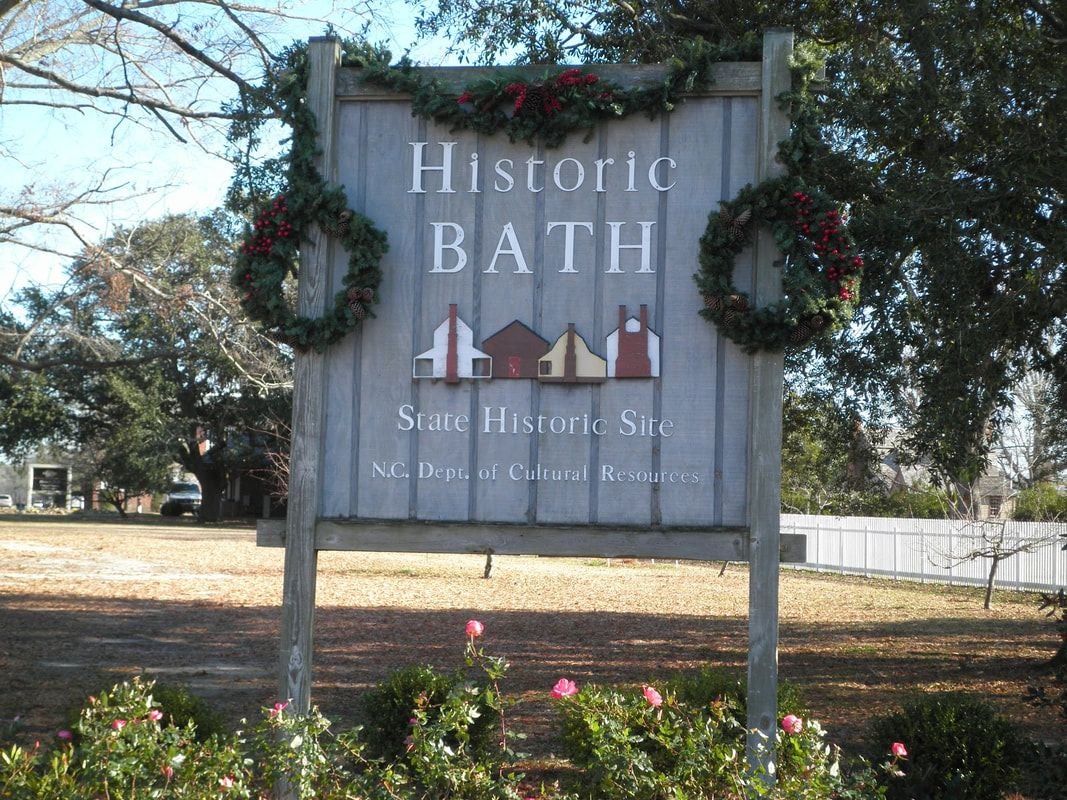PIECE OF THE PAST: First phase of Glebe House renovations completed
Published 8:19 pm Thursday, July 23, 2015
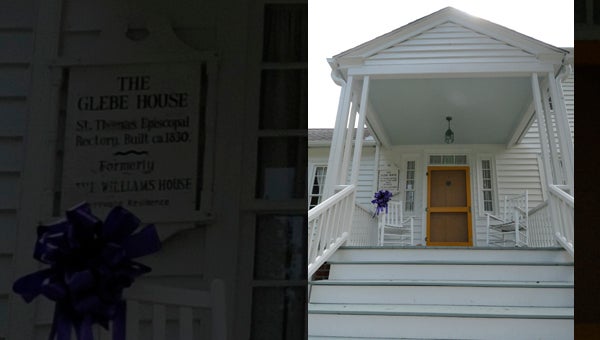
RENOVATION: The steps to the front porch of the Glebe House were reoriented toward South Main Street, which historic preservationist John Wood said was more in keeping with the period when the house was built.
Bath has history — anyone who takes a stroll through the sleepy little town breathes it in, just as easily as they can the breeze off the creek. But every now and then, that history finds new life through hammer and nail, two-by-fours and the wash of paintbrushes. History is polished and put on display for all.
Such is the case with the circa 1820s Glebe House, the property owned by the Diocese of East Carolina, a part of the St. Thomas Episcopal Church grounds. The once crumbling structure, that was once the home of Rev. A.C.D. Noe and his family, is on its way to being restored to its former glory.
Several years ago, the Glebe House exterior clapboard was rotting at the base. Inside, plaster crumbled. There was no heat, nor air conditioning. Something needed to be done, and it was former Historic Bath State Historic Site manager Bea Latham who got the project moving. Soon, an entire community got involved.
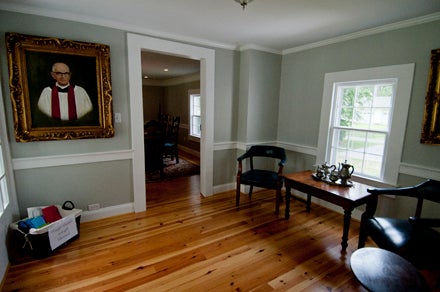
BREEZEWAY: In the late 1930s, Rev. Noe enclosed the breezeway between the Glebe House and the kitchen in a separate building behind the house. Renovations included turning the former kitchen into a meeting room. Here, new wood flooring that matches the original in the kitchen can be seen.
Bath resident Bill Axness was one of those people. With a background in hotels and restaurants, having been a part in their construction many times, Axness became one of the de facto project managers.
“We had no money,” Axness said, of the project’s beginning.
However, having no money was no deterrent to parishioners and other Bath residents bent on saving the Glebe House from its slow decay. A Bath Historic Commission grant for $10,000 helped secure the building’s exterior, Axness said. Private donations were made, as well as a $5,000 grant from the Diocese of East Carolina. Then the St. Thomas tag sale was invented: donations of furniture, clothes, decorations and household goods brought in thousands of dollars, in a much anticipated event every year. Volunteers pitched in time and goods, the best of which would later become part of the Glebe House furnishings — rather than sell it for money, they’d keep it for use.
“Each time we did it, we raised anywhere from $10,000 to $12,000,” Axness said.
But it was just as much the goods and services, time and energy, devoted to the project that made it possible. According to Axness, Lowe’s Home Improvement sold construction materials at cost, while flooring contractor J.W. Woolard sealed the new flooring his company installed at no charge. An electrical contractor, Chris Clayton, donated his services and even the ladies of the neighboring Christian Church sewed curtains for the downstairs office.
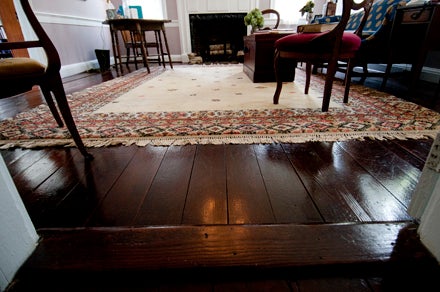
RESTORED: Wide heart of pine planking, ½-inch thick, is one of the main distinguishing features on the first floor of the Glebe House.
“The generosity was enormous,” Axness said. “It’s been a town effort.”
It’s estimated that the Glebe House was built at the same time as another historic Bath structure, the Bonner House, and the two homes share similar features, including hand-carved, wavelike cutouts on the main staircase trim and intricately hand-cut mantles in downstairs parlors.
“We wanted to keep this section of the house as original as we possibly could,” Axness said, adding that phase two of the project will include upstairs rooms.
The original heart of pine floors are six inches wide and an inch and a half thick. Below the floors are original joists made of cypress logs. While the Rev. Noe updated the house in late 1930s, enclosing a breezeway leading to an exterior kitchen and installing indoor plumbing, more modern amenities like heat and air conditioning were only added during this upfit, according to Axness. Original wainscoting, woodwork and flooring were preserved instead of replaced.
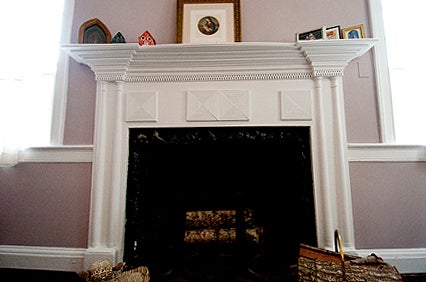
IN THE DETAILS: This intricately carved mantle was hand cut. It bears a resemblance to another historical property in Bath, the Bonner House.
Restoring the Glebe House into a comfortable working and meeting space for church staff and parishioners was not the only reason, nor even the most important reason, for the community-based renovation. Rather, it’s that the home is an integral part of Bath’s past, a piece of a historical puzzle worth preserving for future generations.
“As much as it belongs to the church, the diocese, it belongs to the town and the people,” Axness said.





